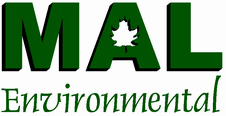Silica
is a naturally occurring mineral composed principally of silicon
dioxide (SiO2) which exists in both crystalline and amorphous forms.
Crystalline refers to the orientation of the SiO2 molecules in a
fixed pattern as opposed to a non-periodic, random molecular arrangement
which is defined as amorphous (without shape). Quartz, cristobalite
and tridymite are the three most common crystalline forms. Silica
is used in the fabrication of stone and clay products, glass enamels
and ceramic products. It is also found in sandstone, granite, flint,
slate, abrasive, brick, concrete, cement mortar, sand and asphalt.
Exposure to silica typically occurs through inhalation on construction
or demolition projects, or during industrial processes involving
silica. Inhalation of crystalline silica can cause silicosis, bronchitis,
fibrosis (scar tissue in the lungs which makes breathing difficult),
granulomatosis infections (such as tuberculosis), and lung cancer. |
Industrial
processes involving silica are regulated under the Ontario Occupational
Health & Safety Act, R.S.O. 1990, Regulation 845 as amended
by O.Reg. 606/05, Designated Substance – Silica. Exposure
levels and respiratory protection in this regulation also apply
to construction projects at a workplace where workers are likely
to be exposed to silica.
A guideline respecting silica on construction projects was published
by the Occupational Health and Safety Branch of the Ontario Ministry
of Labour in September 2004. The disturbance of silica on construction
projects is classified as Minimum (Type 1), Intermediate (Type 2)
or Maximum (Type 3) work, each of which will have defined precautionary
measures. Respiratory protection required under the guideline is
dependent upon the classification of work. There is no specific
requirement to monitor exposure levels. |



